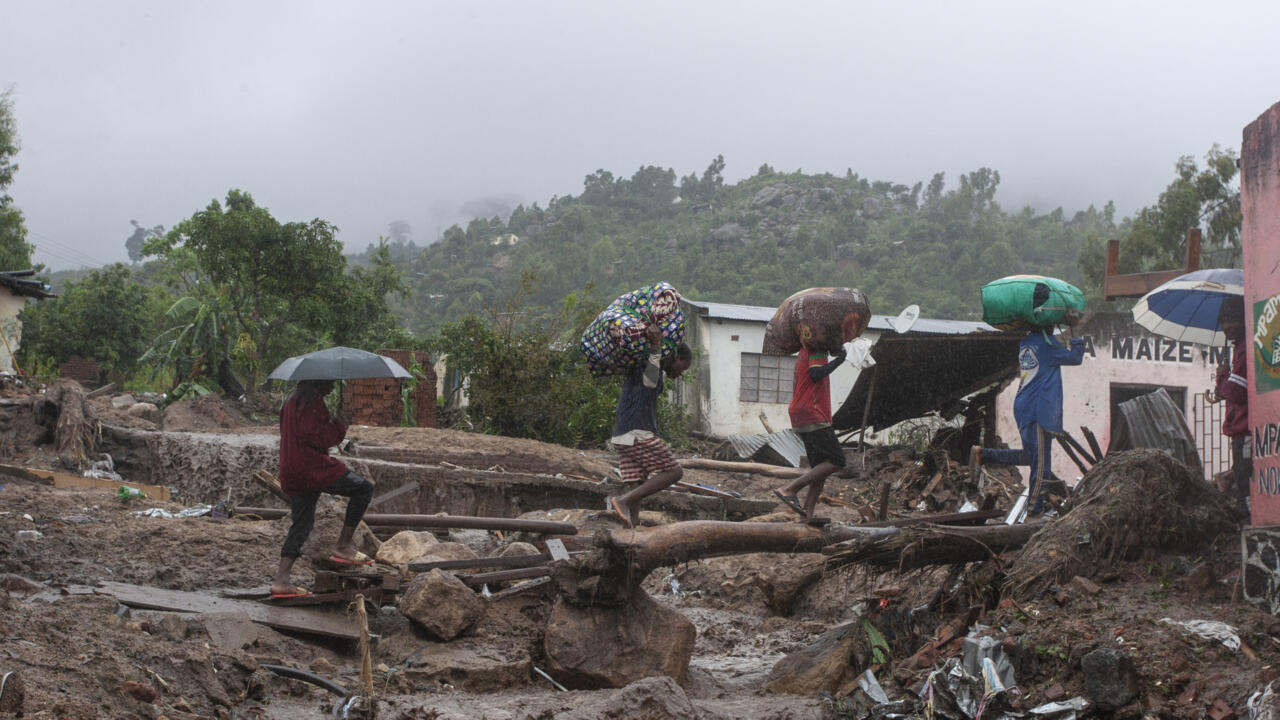Finding survivors of Cyclone Freddy in Malawi and Mozambique looks increasingly uncertain on Wednesday March 15, after floods and landslides killed more than 200 people, ravaging towns and villages.
More casualties are feared, say rescuers, who have seen the record longest cyclone hit southern Africa twice in three weeks.
Freddy followed a looping path rarely charted by meteorologists, making landfall for the second time over the weekend in Mozambique, before heading into southern neighboring Malawi early on Monday.
Mozambique authorities reported 20 dead and 24 injured.
But Malawi has so far paid the heaviest price for the return of the tropical cyclone, now counting at least "190 dead, 584 injured and 37 missing", according to a statement from the National Disaster Management Office.
President Lazarus Chakwera, who returned from Qatar on Tuesday, praised the efforts of the volunteers: "We have arrived in a devastated nation," he lamented in a statement.
A state of disaster has been declared in the region of Blantyre, the economic capital and epicenter of the bad weather.
In the township of Chilobwe, near Blantyre, residents say they are convinced that dozens of bodies are still there, buried in mud as the rain continues.
Excavators have been deployed in some places.
The day before, families and rescuers searched the ground with their bare hands.
>> To read: Cyclone Freddy: anatomy of an extraordinary weather phenomenon
Over 20,000 Malawians homeless
Nearly 20,000 Malawians lost their homes as the cyclone returned to the Blantyre region.
Mayeso Chinthenga, 14, had gone with other boys to collect firewood when they "saw rocks rolling down the mountain".
They ran as fast as they could.
He and his family survived the landslide.
But "our house is destroyed. We have lost everything", he says sadly.
Before adding: "Some of our neighbors died on the spot".
The teenager's family has been living in Kapeni school in the Blantyre region since Monday.
There are many women and children with them.
"A lot of people came here looking for shelter, saying they had fled the mudslide," said Florence Chiwale, a teacher at the school.
"We decided to open the classrooms to them."
The hospital in the region is meanwhile "overwhelmed by the influx of wounded", alerted in a press release Doctors Without Borders, present on the spot.
"Queen Elizabeth Central Hospital alone received 220 people, including 42 adults and 43 children who were declared dead on arrival."
The NGO fears in particular a jump in cholera cases in the country in lack of vaccines, which is already fighting against the epidemic of this most deadly infectious disease it has known.
Nearly 59,000 people were affected in the country and nearly 20,000 displaced, urgently housed in schools or churches.
Freddy formed off Australia in early February and has been plaguing the Indian Ocean for 36 days.
Tropical cyclone John had lasted 31 days in 1994. Freddy had hit southern Africa for the first time at the end of February.
After an unprecedented crossing of more than 10,000 km from east to west in the Indian Ocean, it made landfall in Madagascar before hitting Mozambique.
The death toll was then 17.
Recharging in intensity and humidity over the warm seas, Freddy then turned around, returning to swoop down on southern Africa two weeks later.
He killed 10 last week while returning to Madagascar.
With AFP
The summary of the
France 24 week invites you to come back to the news that marked the week
I subscribe
Take international news everywhere with you!
Download the France 24 app

